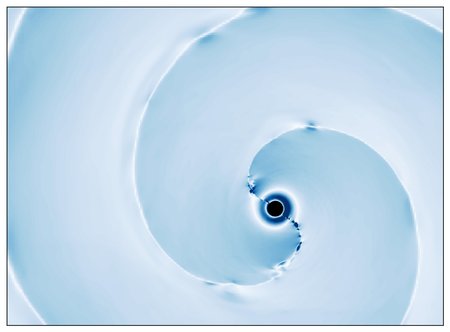NASA’s OSIRIS-REx spacecraft will pass Earth this weekend, returning a sample gathered from the potentially hazardous asteroid Bennu on Sunday (Sept. 24).
Fingers crossed that space enthusiasts may be able to watch the first part of this historic sample return mission — the first time NASA has collected material from an asteroid and brought it home — live and for free online. That is if all goes according to plan for Italian astrophysicist and astronomer Gianluca Masi and his Virtual Telescope Project.
“I’m very pleased and excited to announce that the Virtual Telescope Project will try to share, in real-time, images of NASA’s OSIRIS-REx spacecraft 12 hours before it releases its precious Sample Return Capsule with samples of asteroid Bennu,” Masi said in an email to Space.com.
The livestream is set to start at 7 p.m. EDT (2300 GMT) on Saturday (Sept. 23). Watch it live here at Space.com or on the Virtual Telescope Project’s website. (Be aware that weather conditions or other factors could affect the project being able to observe OSIRIS-REx probe from the ground.)
Live updates: OSIRIS-REx asteroid sample return landing
Related: How NASA’s OSIRIS-REx will bring asteroid samples to Earth in 5 not-so-easy steps

OSIRIS-REx launched from Cape Canaveral Space Force Station in Florida in September 2016 atop a United Launch Alliance Atlas V rocket, beginning what would be a two-year voyage to the 1,720-foot (524 meter) wide asteroid 101955 Bennu. After reaching the asteroid in August 2018, the spacecraft spent another two years observing Bennu’s surface.
When this survey was completed, the spacecraft got close enough to the surface of Bennu to recover material — and almost got swallowed up in the process. In 2021, with the Bennu samples stored in a sample return capsule, OSIRIS-REx fired up its propulsion system and began a 1.2 billion-mile (1.9 billion-kilometer) trip back home.
When it arrives this weekend, the spacecraft will jettison its sample return canister and then leave the vicinity of our planet again, heading out to a different asteroid. The canister should land on the surface of Earth in the western United States in the desert region around the U.S. military’s Utah Test and Training Range.

Asteroids like Bennu were formed around 4.5 billion years ago, around the time the solar system planets were being born from material leftover from planet formation. That means that studying asteroid material can help reveal the state and composition of matter around the infant sun in the early solar system.
For two years after the sample returns, from late 2023 until 2025, the sample will be cataloged and analyzed, according to NASA. At least 75% of the Bennu sample will be preserved at NASA’s Johnson Space Flight Center in Houston for future research.
RELATED STORIES:
“OSIRIS-REx’s many accomplishments demonstrated the daring and innovative way in which exploration unfolds in real-time,” Associate Administrator for Science at NASA Headquarters Thomas Zurbuchen said. “We have a primordial piece of our solar system headed back to Earth where many generations of researchers can unlock its secrets.”
While this research is conducted with the Bennu, OSIRIS-REx will change names to OSIRIS-APEX and journey to the near-Earth asteroid Apophis, settling into orbit around the 1200-foot (370 meter) wide space rock by 2029.


